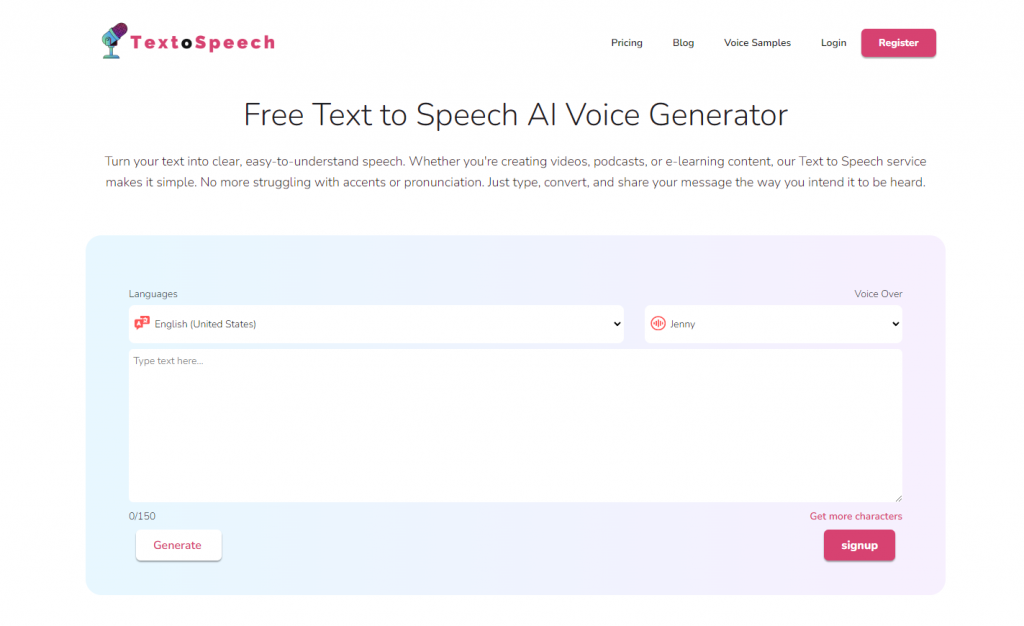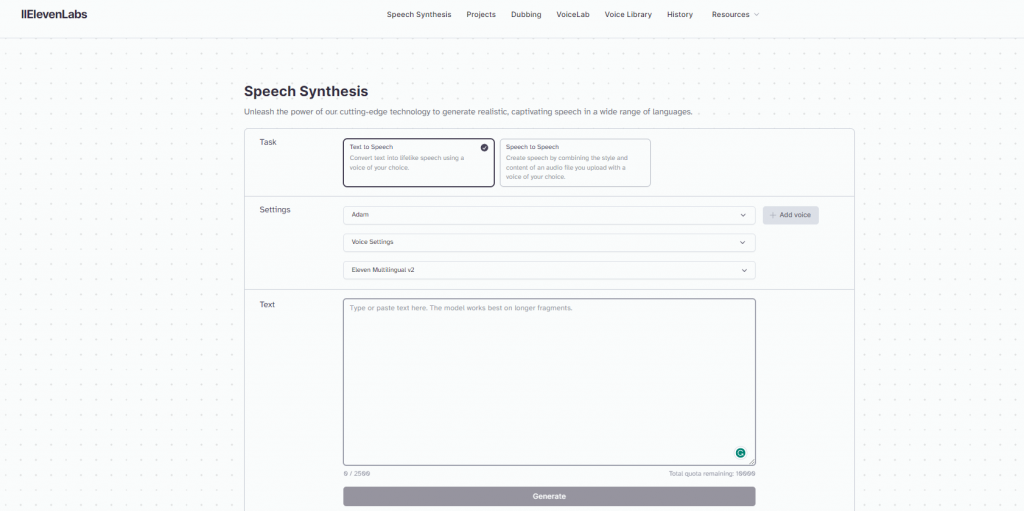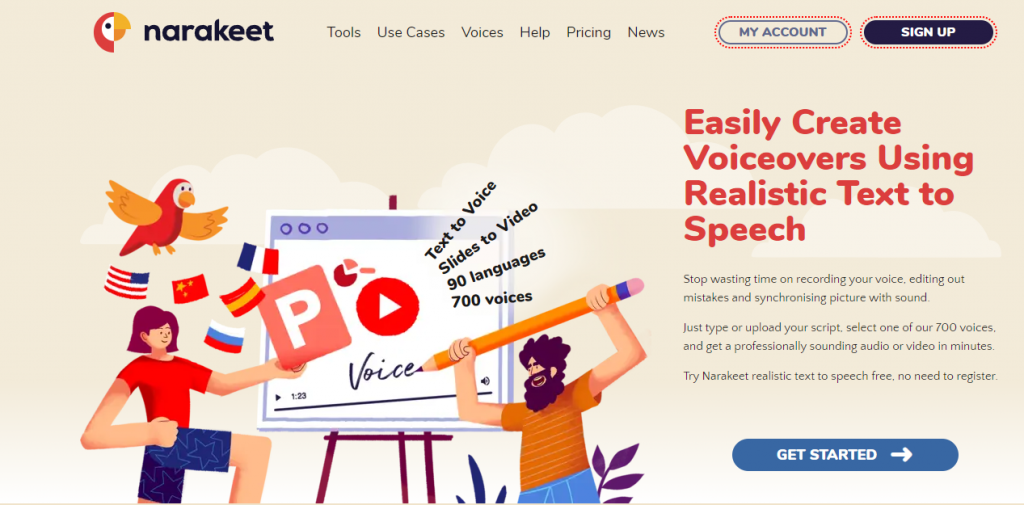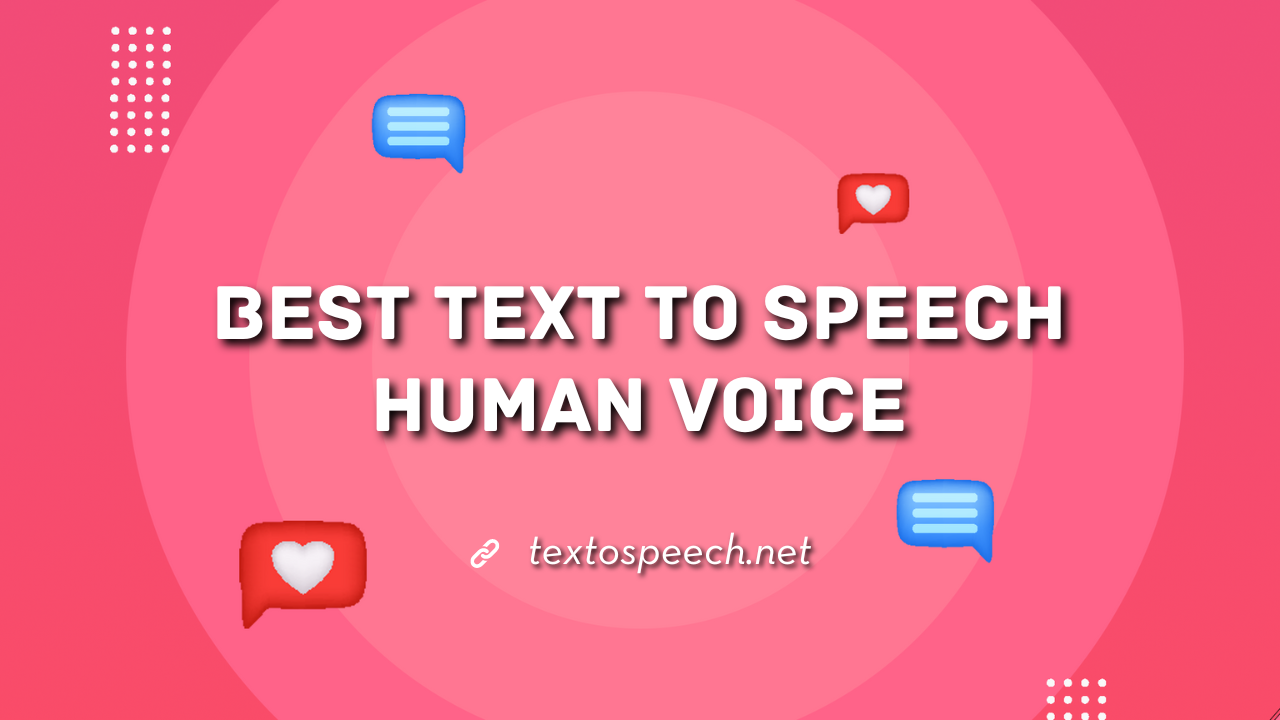Text-to-speech technology has come a long way, especially when it comes to creating human-like voices. The best text-to-speech human voices are those that sound natural and can easily be mistaken for a real person speaking. These advanced systems use AI and machine learning to produce voices that have proper intonation, emotion, and even regional accents.
In this article, we will discuss how these top-notch text-to-speech systems work, their applications, and why they’re essential in today’s digital world. We’ll also look at some of the leading technologies and providers in this field, helping you understand what makes a text-to-speech voice genuinely sound human.
Why Text to Speech Human Voice?
Text to Speech (TTS) with human-like voices is getting popular. Why? Because it makes digital content more accessible. For example, people with reading difficulties or visual impairments can listen to text instead of struggling to read it.
TTS also helps in learning languages. Hearing text in a new language can improve pronunciation and listening skills. Plus, it’s useful for multitasking. You can listen to articles or books while doing other tasks.
Most importantly, TTS with human voices sounds natural. It’s more pleasant to listen to than robotic voices. This makes learning, entertainment, and accessing information more enjoyable for everyone. So, TTS with human voices is not just a tech trend; it’s a helpful tool for many.
5 Best Text to Speech Human Voice
1. TextoSpeech

Textospeech is a web tool focused on text-to-speech (TTS) technology. TTS is a cool tech that turns written words into spoken voice. This site offers high-quality, human-like voices. This is important because the more natural the voice sounds, the easier it is to understand and enjoy.
The site likely uses advanced algorithms to make the voice sound real. This means when you type something, the website can read it out loud, sounding almost like a human. It’s handy for folks who prefer listening over reading, like when multitasking or for people with visual impairments.
So, in short, textospeech.net is probably a user-friendly platform where you can convert text into natural-sounding speech. This technology can be super useful for different purposes, like learning, entertainment, or accessibility.
Features of TextoSpeech
- Supports over 50 languages and 300 voices, providing a diverse range of content needs.
- Provides an easy-to-use text editor with real-time preview for fine-tuning voiceovers.
- Flexible pricing plans, including a free version, low-cost subscription options for advanced features, and a lifetime plan.
- Natural-sounding voices that are ideal for YouTube videos and multimedia projects.
- Web-based platform, ensuring accessibility and convenience without the need for software installation.
- Fast processing speeds allow for faster turnaround on voiceover projects, increasing productivity.
Pros and cons of TextoSpeech
Pros
- Variety of Voices and Languages
Ease of Use
Time-Saving
Cost-Effective
Consistency
Accessibility
Cons
- Limited Features in Free Version
Lack of offline functionality
2. ElevenLabs

ElevenLabs.io is a platform offering advanced text-to-speech services. They use AI to turn written text into speech that sounds like a human voice. This technology is useful for creating voiceovers for videos or reading out text for those who prefer listening.
Their text-to-speech service stands out because of its natural-sounding voices. Unlike robotic voices, ElevenLabs.io aims to make the speech sound real, like a human is speaking. This is great for making content more engaging and easier to understand.
They cater to various needs, like making audiobooks, helping visually impaired users, or offering voice assistants. By turning text into realistic speech, ElevenLabs.io enhances accessibility and user experience in different applications.
Features
- Generates high-quality audio from text using AI algorithms.
- Offers pre-designed voice profiles and the ability to create new voices from audio snippets
- For long-form content creation, such as audiobooks, with contextually-aware voices.
- Translates and preserves original voice characteristics in over 20 languages.
- Utilized by publishers and authors for AI-narrated content.
- Sets rules against misuse, supporting artistic and political speech
Pros and cons
Pros
- Human-Sounding Voices
- Versatile and Realistic AI Speech
- Voice Lab Feature
- High-Quality Audio
- Voice Library
- Intuitive Interface
Cons
- Control over the final aspects
- Huge number of features
- High Learning Curve
3. Speechify
Speechify is a website that turns text into speech, like reading out loud. It’s great for people who prefer listening over reading. The site uses technology to make the voice sound very human-like, not robotic. This makes it easier and more enjoyable to listen to.
One cool thing about Speechify is its range of voices. You can choose different accents and styles, which makes it useful for many people. Whether you’re learning a new language or just want to hear your book read in a soothing voice, it’s handy. Plus, it’s simple to use. Just put your text in, pick a voice, and it reads it for you. This feature is really helpful for those who have trouble reading or just want to rest their eyes.
Features
- Speechify offers over 30 languages and a wide range of 130+ voices, including natural-sounding and celebrity-like options.
- Includes reading speed control, highlighting text as it’s read, and converting text from books, PDFs, and web pages.
- Integrates with browsers and mobile devices, allowing seamless text-to-speech conversion across different platforms.
- Offers a free version with basic features and a premium plan with advanced capabilities like more voices and offline listening.
- High-quality voice synthesis, providing clear and natural-sounding audio for various content types.
- User-friendly interface, making it easy for users of all skill levels to navigate and use the tool effectively.
- Multi-device compatibility, supporting usage across computers, smartphones, and tablets for consistent accessibility.
Pros and cons
Pros
- Accessibility
- Language Learning
- Productivity
- OCR technology
- Support for Multiple Platforms
Cons
- Naturalness of Voice
- Accuracy and Pronunciation
- Subscription Costs
- Limited Context Understanding
4. Narakeet

Narakeet is a website that offers text-to-speech services. It’s known for converting written text into speech that sounds like a human voice. This is useful for creating voiceovers for videos or audio files. What’s special about Narakeet is its focus on natural-sounding voices.
Instead of robotic or unnatural tones, it provides voices that sound more like real people talking. This makes the audio more engaging and easier to listen to. It’s handy for anyone who needs to turn text into speech, like for educational videos, presentations, or digital content.
By using human-like voices, Narakeet helps make the listening experience more pleasant and relatable.
Features
- Offers over 700 voices across 90 languages, catering to a global audience and diverse content needs.
- Includes background music options, sound effects, and the ability to adjust speech speed and pitch for customized voiceovers.
- Easy-to-use script editor and the ability to convert PowerPoint presentations directly into narrated videos.
- Flexible pricing plans, including pay-as-you-go and subscription options, are suitable for various user needs and budgets.
- High-quality, natural-sounding voices enhance the overall audio experience of your content.
- Easily integrates with various content creation workflows, streamlining the process of adding voiceovers to videos and presentations.
- Wide accessibility with support for multiple languages and dialects, making it ideal for creating content for international audiences.
Pros and cons
Pros
- Narration
- Multilingual Support
- Automated Video Creation
- Customization Options
- Cloud-Based
Cons
- Limited Human Touch
- Learning Curve
- Cost
5. PlayHT

PlayHT is a tool that converts written text into speech. It uses advanced technology to make the speech sound very much like a human voice. This means when you type something, it can read it back to you in a way that sounds natural, not robotic.
This is really handy for making content more accessible, like for people who prefer listening over reading, or for those with visual impairments. The great thing about Play.ht’s text-to-speech feature is its variety. It offers different voices and accents, so you can pick one that suits your content best.
This flexibility makes it useful for creating audio versions of articles, books, or even for giving a voice to characters in stories. Plus, it’s user-friendly, so anyone can use it without needing technical skills.
Features
- Offers over 900 AI voices across 100+ languages, catering to a global audience.
- Includes SSML tags for voice control, WordPress plugin, and podcast hosting integration.
- Real-time voice preview to ensure quality before finalizing the audio.
- Flexible pricing plans, including a free version and affordable premium options.
- High-quality voice cloning technology for personalized voiceovers.
- Easy-to-use interface for quick text-to-speech conversion.
- Advanced customization options, including speed, pitch, and emphasis adjustments.
Pros and cons
Pros
- Wide Range of Voices and Languages
- Realistic Voice Synthesis
- Easy to Use
- Customization Options
- Integration Capabilities
Cons
- Dependence on Text Quality
- Lack of Emotional Depth
- Cost
- Limited Customization in Free Version
FAQs
What is Text to Speech with Human Voice?
TTS with human voice refers to technology that converts written text into spoken words using digital human-like voices. It’s used for reading text out loud in a way that sounds similar to a natural human voice.
How does Text to Speech work?
TTS technology works by analyzing and processing the text, then converting it into speech using synthesized voices. Advanced systems use AI and machine learning to make the voice sound more natural.
Can Text to Speech voices sound exactly like humans?
While TTS voices have become very sophisticated and can sound very close to human speech, they may still lack some nuances of human expression. However, the technology is constantly improving.
What makes a TTS voice sound human-like?
Human-like TTS voices are achieved through advanced algorithms that mimic human prosody and intonation. The more nuanced the inflections and rhythm, the more natural it sounds.
Conclusion
The best text-to-speech human voices offer realistic and clear speech, making digital interactions more natural. As technology advances, these voices are becoming more versatile and lifelike, enhancing various applications from audiobooks to virtual assistants.
Ultimately, these top-tier voices are not just about sound quality, but also about making digital content more accessible and engaging for everyone.

